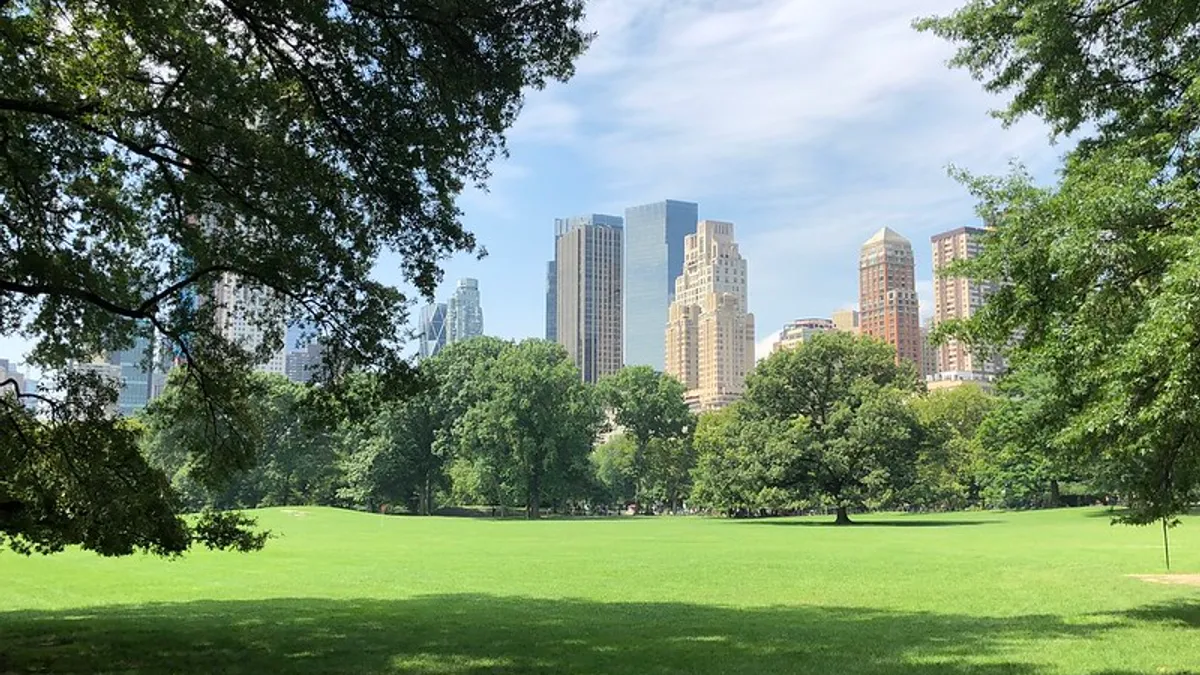Dive Brief:
- A new Urban Institute report released Wednesday, commissioned by the Knight Foundation, surveyed 11,000 U.S. residents across 26 metro areas to understand what determines a person's sense of attachment and connection to their city or community.
- Access to arts and culture within a metropolitan area was highlighted as a key amenity to create feelings of attachment and encourage greater investments of resources among residents, according to the report.
- The amount of time that people spend visiting a downtown or city center, or visiting easily accessible recreational and safe spaces, were also both found to have significant impacts on residents' actions and feelings of attachment to a metro area.
Dive Insight:
Quality of life is the most significant factor for people when choosing to remain or stay in a city, followed by family and career. Nationally, 58% of respondents said they would prefer to stay in their metro area, and three out five people said the local lifestyle and culture is "perfect" for their needs.
Yet the report found people of color and low-income residents were both shown to have a more difficult time accessing the quality of life amenities that can boost those feelings of attachment. For instance, 90% of White residents reported having access to recreational areas, for example, compared to 78% of Black residents.
As a city, fostering feelings of community attachment and connection is crucial to maintaining residents, especially amid challenges like the current COVID-19 crisis.
"COVID-19 is causing us to rethink the future of our communities," Knight Foundation Chief Program Officer and SVP Sam Gill said in a statement. "People are reevaluating what matters to them. In some cases, the pandemic has left us yearning for the parks and gathering spaces we are now denied. In other cases, it’s leading us to ask how people can safely come together and connect."
The survey results also come as some reports have shown the pandemic could result in migrations away from big cities. In fact, New York, Los Angeles, and Chicago were already experiencing population loss even before the pandemic started, according a Brookings Institution report.
And a recent Moody's Analytics report recently found the pandemic could result in movement away from urban powerhouses like New York and toward less dense college towns instead like Madison, WI and Durham, NC.
To encourage stronger feels of attachment to cities, the Urban Institute report makes the the following recommendations for cities and their stakeholders:
-
Boost time in the city center: Initiatives that lure more residents from the suburbs to the downtown-area can help foster both stronger feelings and actions in support of the city.
-
Focus on improving quality of life: Stakeholders can improve feelings of attachment by enhancing perceptions of access to quality amenities like recreational facilities, arts and culture, and safe places to live.
-
Pay attention to equity: Racial and income inequities must be examined and addressed with approaches that address them head-on.
To keep up with all of our coverage on how the new coronavirus is impacting U.S. cities, visit our daily tracker.












